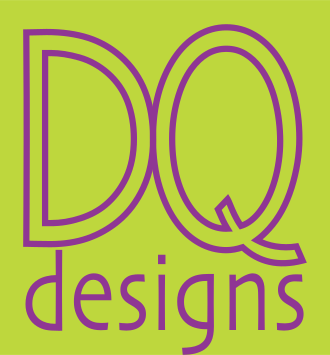It can be overwhelming and confusing when your designer sends to you various file formats once your logo has been finalised for your business. You may be thinking, ‘What am I supposed to do with these files?’
Usually the files supplied by your designer fall into two categories: those for print and those for screen such as viewing on your desktop, laptop etc.
Files For Print
Logo Format – AI
Logo AI files are commonly used for printing. They are vector based. That is, you can increase or decrease the size of the logo without losing quality. They are usually in CMYK mode (Cyan, Magenta, Yellow and Black). This four colour process mode uses ink and allows printers to print your logo on business cards, brochures, flyers and so forth at a high printing standard.
Logo Format – PDF
Logos in PDF format are universally accessible. They can be easily seen by people on a desktop computer, laptop etc. You do not need specific graphic software. Depending on the resolution of the logo PDF file, it can also be scaleable to any size and be used for high quality printing.
Files For Screen (Digital Purpose)
Your designer may provide your logo in PNG and JPEG formats. These files are pixel based. They are good for viewing on computer devices. However, they are not always great for high quality printing. Logo PNG and JPEG files can be used in word documents, Powerpoint presentations, as well as for email signatures and social media projects.
Logo Format – PNG
This logo format has the option to be transparent. Having a transparent background makes it perfect for placing against a colour background or putting over images.
Logo Format – JPEG
Unfortunately, this logo type does not have a transparency option. No transparency option means you cannot place a JPEG logo over background colours or images.
Logo Format – SVG
If your designer gives you a logo in SVG format, this is particularly suitable for placing on websites. It is a vector based file that is compatible for graphics on the internet. This file format is the flexible formula for using on websites. They offer transparency, scalability, editing and high quality resolution.
It is important to note that JPEG, PNG and SVG logo formats are saved in RGB mode so that they provide the best colour on the internet.
Summary
AI and PDF logo files are great for printing. They are scaleable and can be edited by designers and printers using specific design programs.
On the other hand, JPEG, PNG and SVG logos are suitable for digital projects. JPEG and PNG logos are raster based. However, SVG logos although vector based are unique in that they are well suited for websites and internet projects.
I hope this information helps you to better understand the different file formats associated with logos and how to use them for the most suitable purpose, whether for print or digital.

